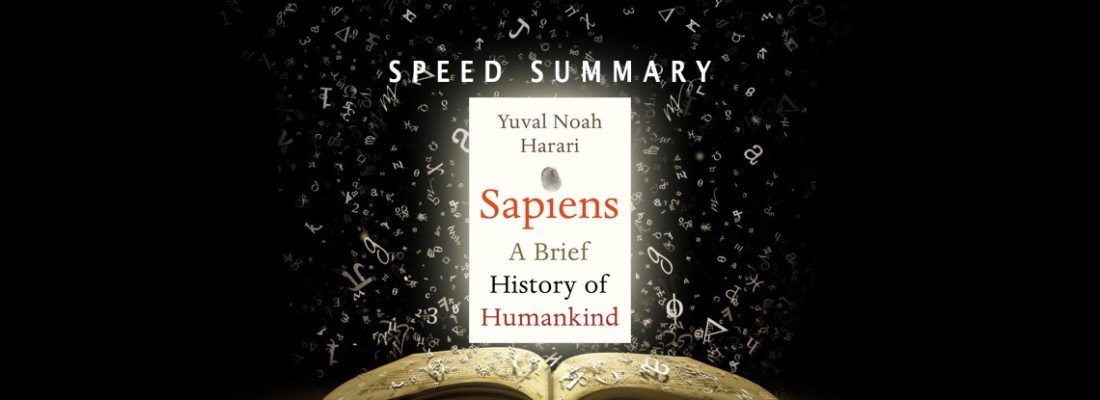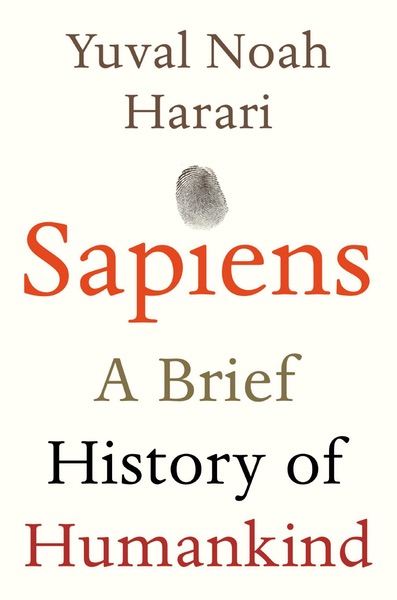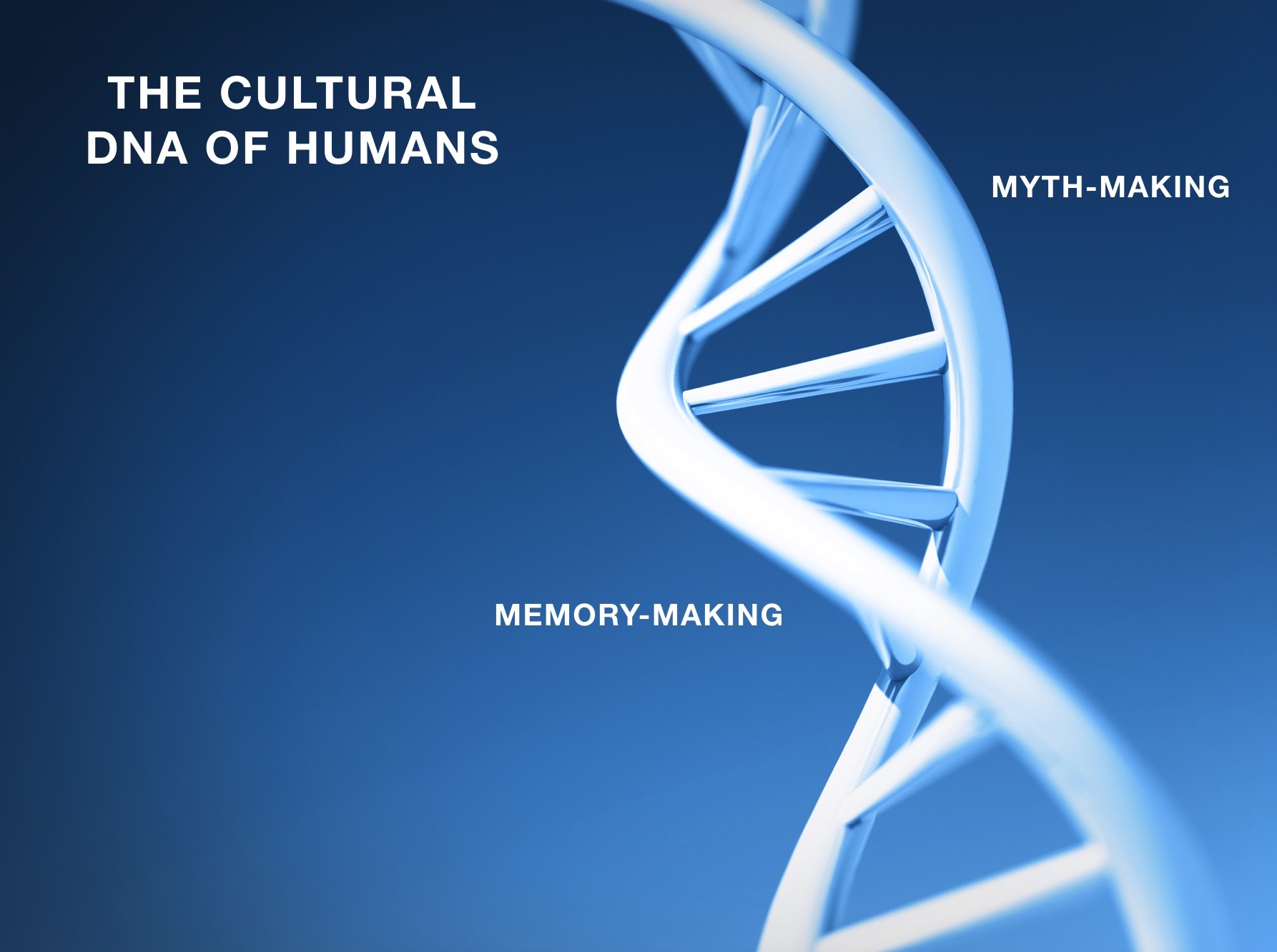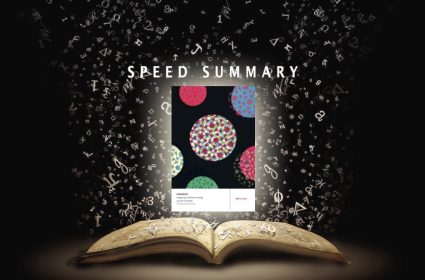Speed Summary: Sapiens – A Brief History of Humankind


- Sapiens: A Brief History of Humankind
- Author: Yuval Noah Harari
- Publisher: Harper
- Publication: 2014 (2011 in Hebrew)
What does it mean to be human? In a sweeping narrative spanning two and half million years of human evolution, Israeli historian Yuval Noah Harari weaves insights from science and the humanities together to answer to what it means to be human.
It’s impossible to do justice to the 443 pages of rich insight that make up the bestselling Sapiens in just a few lines, but here are our ten top takeouts relevant to anyone researching or innovating for humans.
First though, a word about terminology.
You are human but you are not the only species of human. You are Homo Sapiens (“Wise Humans” as we immodestly label ourselves) and just one of a number of different species of human that have roamed the planet together.
It is likely that your Sapiens ancestors killed off the Neanderthal species of humans about 40,000 years ago, and did so because “they were too familiar to ignore, but too different to tolerate” (they also had bigger brains than your ancestors – but perhaps your ancestors had bigger sticks).
Today, Sapiens is the only remaining species of human. However, if you are European or Middle Eastern, then your status as Homo Sapiens is more complicated. You are not pure Homo Sapiens, but probably the result of interspecies breeding between Sapiens and Neanderthal (up to 4% of your genes are probably Neanderthal). So forget mixed race, intersex or other non-binary identities, you are Interspecies. And you are also Trans, but you’ll have to read through to insight #10 to find out why.
- Myth-Makers. The big idea in Sapiens is the thing that sets Sapiens apart from other species. And that difference is that Sapiens are myth-makers; they use imagination and language to create and communicate new worlds, alternatives and possibilities. The importance of shared myths is that they allow Sapiens to cooperate, organise at scale, and dominate the world. Without myths, there is no glue to bind Sapiens together. At an individual level, humans might be memory-makers, but as a species-level they are myth-makers. The genetic mutation that allowed the cognitive powers of speech and imagination to emerge some 70,000 years ago is what Harari calls the Cognitive Revolution.
- Intersubjectivity Rules. The source of human insight is not objective fact nor subjective impression, it lies in ‘intersubjective’ myths – our shared subjectivity. Powerful intersubjective myths include laws, gods, money, morals, patriarchy and nations that exist neither in the natural world, nor only in unshared imaginations, but in shared intersubjectivity. Understanding humans is not about understanding their differences, it’s about understanding the intersubjective myths they share.
- Brands are Powerful Intersubjective Myths. Peugeot (Harari’s example) is an example of an intersubjective. It doesn’t exist in the natural world (you could kill all Peugeot people, buildings and products, and Peugeot would still exist). Instead, Peugeot exists as a shared myth or ‘fiction’ in our intersubjective imagination that is powerful because it has the power move humans to produce and consume at scale.
- Fictions, Not Facts Explain. The myths Sapiens share define who they are and what they do. Take money, a most powerful shared fiction. Dollar bills are meaningless tokens without the ‘shared fiction’ that they have value. Endowed with shared meaning, money becomes a unit of exchange, peace of mind, and the measure of our choices. And importantly, it explains behaviour. (For Harari money is also “the apogee of human tolerance” because it is more open-minded than any other shared fiction (language, laws, cultural codes, or religious beliefs) because it does not discriminate on the grounds of ethnicity, religion, age, or sexual orientation.)
- Change the Myth, Change the World. The intersubjective myths that both bind Sapiens together and break them apart is the glue that holds culture together. Break the myth and you break the world, leading to dramatic and rapid social change. Break the myth of monarchy, slavery, patriarchy and you change the pattern of history.
- Biology Enables, Culture Forbids. Just as there is nothing so natural as chemicals (they exist in the natural world), anything Sapiens can do is, by definition, natural. Biology opens doors, and it is culture that closes them by proscribing certain behaviours, and labelling them as unnatural. The study of human culture is largely the study of what we prohibit,
- The Law of the Few. History is made by the few, whilst the masses toil at work. For example, the second major revolution in Sapiens’ history – the Agricultural Revolution (around 12,000 years ago) – enabled increased food production and massive population growth, but it forced that average farmer into monotonous hard labour. The fruits of the Agricultural Revolution were enjoyed by a few pampered elites, but who were freed up to make history. For Harari, the Agricultural Revolution was history’s biggest fraud.
- The How of Happiness. Human “happiness does not really depend on objective conditions of wealth, health or even community. Rather, it depends on the correlation between objective conditions and subjective expectations.” This means yesterday’s luxuries are today’s necessities. And by raising expectations further, mass media and advertising may be depleting the human potential for contentment. However, happiness may be a false god (‘fiction’) inappropriately elevated from its natural status as a fleeting neurochemical response designed to reward adaptive behaviour. For Sapiens, happiness may not be the absence of misery, but the cause of misery driven by the tension, restlessness and dissatisfaction that comes from the pointless, perpetual pursuit of an ephemeral neurochemical response.
- Humans are Superhuman. The third, and possibly final Revolution in human history is underway now and is the Scientific Revolution that began 500 years ago. Though scientific discovery and technological innovation, the Scientific Revolution has empowered Sapiens to transform their environment and themselves, giving them superhuman powers and practically limitless energy. The Scientific Revolution has seen mythical stories replaced by falsifiable theories, certainties replaced by uncertainty, conservatism replaced by curiosity, and perhaps most importantly, words replaced by numbers. But are we any happier?
- The Future is Trans. The story of Sapiens is coming to an end (in the next century or so), as the species has outgrown its hominid self. Through science and technology they have the power and intelligence to become gods and create new artificial life and recreate themselves. Sapiens are the new gods of ‘Intelligent Design’ – they are Homo Deus. Their future is not human, it is transhuman as they transition into something new. If they do not destroy themselves first. The problem with Sapiens is that despite their power, they do not know what they want. They do not even know what they want to want. Is there anything more dangerous than dissatisfied and irresponsible gods who don’t know what they want?
The BG Take
Sapiens is perhaps not as impressive as the book that inspired it, Jared Diamond’s epic and influential Guns, Germs and Steel, but it is more accessible and it perhaps more immediately useful for anyone researching or innovating for humans. The big takeout for us at Brand Genetics is that human-centric insight and innovation is about understanding humans as myth-makers as well as memory-makers. Without these twin insights, very little that humans do, makes any sense at all.
As qualitative researchers, we love the idea of researching ‘intersubjectives’, the shared myths people use to make sense of the world and guide their action. Similarly, Harari’s insight that to understand people, you have to understand not what they want or what they do, but what they are not allowed to want or do, opens up interesting avenues of research. Thinking of brands as shared myths is also a useful starting point for investigation. And the idea that people will be happy with innovation only when it beats their expectations is, whilst not new, a powerful reminder of the central role of expectations in insight and innovation.
The narrative of Sapiens is painted with broad brushstrokes with a speculative interpretation that can be and has been, criticised. For the science-minded, Sapiens may seem too interpretivist, whilst for historians, Sapiens may appear too scientised. But for those like us at Brand Genetics, working in human-centric insight and innovation, Sapiens provides a wonderful framework and lens for guiding and interpreting what we do.





